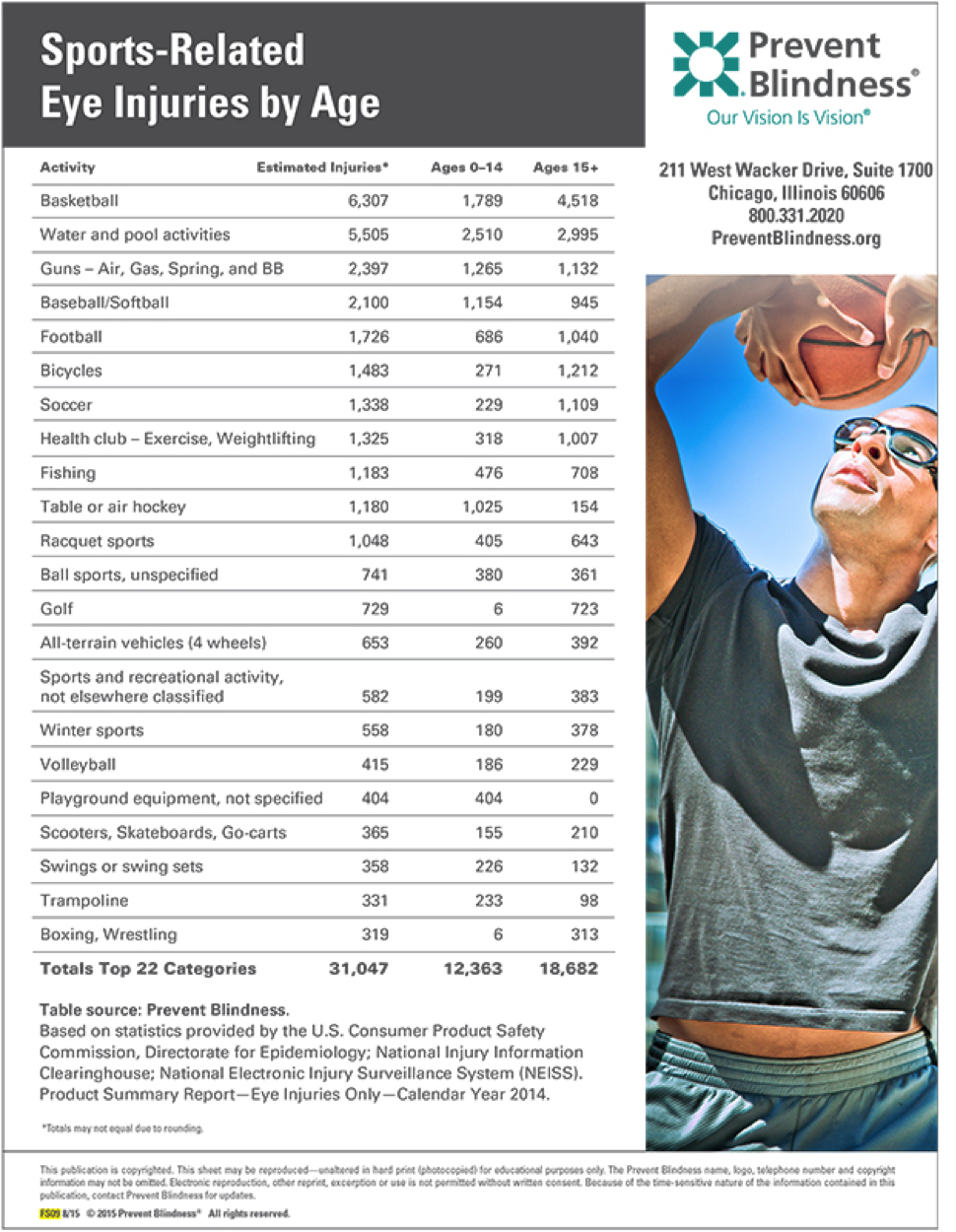
By Maryann Santos, Program Director, Vision Technology, Goodwin College
Athletics are year-round and multi-sport. Children join organized sports from a young age through high school, and some are in sports as infants in baby swim classes, but most get involved during the preschool years. If one attends a youth sporting event, it is evident that there are many missed opportunities in the arena of sports protective eyewear because so few players wear it. Here are some strategies to promote eye health, protection, and safety.
As professionals, we must bring awareness to not only parents and guardians of children, but to athletic clubs, leagues, and facilities that house and manage sporting activities for our youth. Another avenue is to talk to your local legislative representative about introducing a bill requiring sports protective eyewear for youth. This can be dovetailed with establishing grants or programs to aid low-income youth.
PREVENT BLINDNESS
Years ago, I volunteered for Prevent Blindness, and was glad to see that they partner with a well-known sport protective eyewear company. According to Prevent Blindness, eye “injuries from any sport can include infection, corneal abrasions, blunt trauma, inflamed iris, fracture of the eye socket, swollen or detached retina or even a traumatic cataract. In some cases, a significant eye injury can cause permanent vision loss.” The table shows the breakdown by sports, injuries, and age. Note that this data is for those who visited the emergency room and not a private physician’s office.
ASTM
ASTM International, formerly known as American Society for Testing and Materials, is an international standards organization that develops and publishes voluntary consensus technical standards for a wide range of materials, products, systems, and services. Sports eyewear falls under their purview.
As an eyewear dispenser, be sure to check with the manufacturer that the sports eyewear you carry is labeled: ASTM approved. Each sport has its own code. This means the eyewear has been tested for sports. According to ASTM’s abstract on the Standard Specification for Eye Protectors for Selected Sports (F803), this specification covers eye protectors designed for use by players of racket sports, women's lacrosse, field hockey, basketball, baseball, and soccer that minimize or significantly reduce injury to the eye and adnexa due to impact and penetration by sport rackets and balls, lacrosse and field hockey sticks and balls, baseballs, soccer balls, hands, elbows, and fingers.
BRING AWARENESS
Hosting biannual spring and fall sports eyewear trunk shows can be a fun way to bring families and coaches in to learn more about sports protective eyewear and how to prevent injuries. Promote your sport frames in office by setting an area apart showcasing your collection. Work with your ophthalmic frame representative for creative ideas, Point of Purchase (POP) materials, and promotional ideas.
One way to bring awareness outside of your office is to have a table at a youth sporting registration event. And don’t forget utilizing social media. Combined, these strategies can help increase awareness and sales.
Remember, 90% of sports-related eye injuries are preventable. It starts by opening the discussion with your eye doctor in the exam room, youth sports leagues, coaches, parents, and sports protective eyewear vendors. As dispensing opticians, we all play a vital role in helping decrease sports-related eye injuries.
For more information on sports eyewear, go to our CE, Upping Your Game, Taking Sport Eyewear to the Next Level, Part 1 at 2020mag.com/ce.









